<< Learning Center
Media Accessibility Information, Guidelines and Research
The DCMP Impact Story
Media accessibility is crucial for the education and development of students with disabilities. The Described and Captioned Media Program (DCMP) provides access to thousands of educational videos that are aligned to standards and have captions, audio description, and American Sign Language interpretation. And it’s all free, thanks to funding from the U.S. Department of Education.
Beyond providing access to media, DCMP develops new technologies for the creation and delivery of accessible media, provides training for using these resources in the classroom, creates continuing education opportunities for educators, and advocates for systemic change in media production, distribution, and use. Perhaps most importantly is its impact on students.
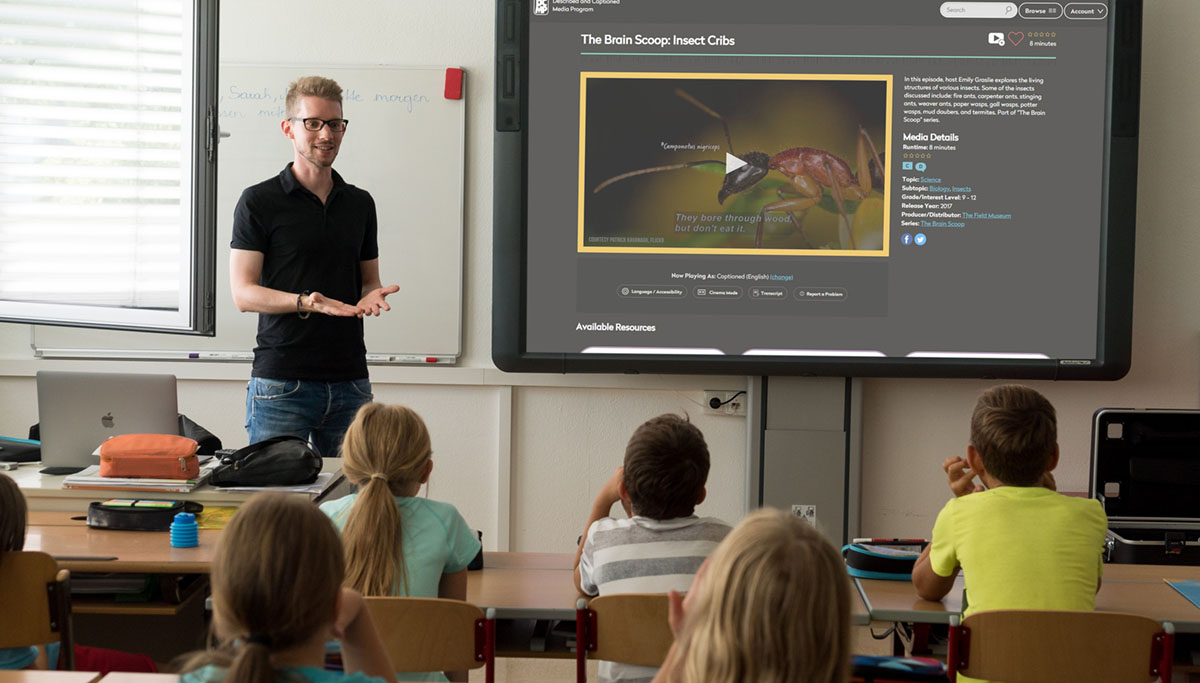
Parents and Educators
Kathy
Like thousands of other teachers, Kathy knew that having accessible online resources was especially important for her students. Continued learning while students are at home during flu outbreaks or snow days has become a necessity. “With DCMP, I don’t have to worry about my students with hearing-loss missing out on the content given to them during ‘distant learning’ time,” she said. “I can continue using the engaging media I would have used in class while easily providing access to all of my students!”
Maria
The increasing need for online accessible media also affects parents who support learning from home. For Maria, the mother of a child with an immune deficiency, accessible media proved even more crucial. “My son is deaf and blind in one eye,” she said. “On top of that, he has a variety of medical complications, the biggest one right now – and most threatening – he doesn't create antibodies.” This meant that his primary education would be led at home by Maria. She searched the Internet, discovered DCMP, and signed up for a free account. “Access to these resources offers him the best and safest chance to grow in a way that he can be successful.”
“Access to these resources offers him the best and safest chance to grow in a way that he can be successful."
Anita

Each student faces unique challenges, and every parent wants their child to have the resources they need to succeed. “My situation is rather unique,” Anita told us. “I am a totally blind mother of a first-grade, sighted child.” Anita supplements her son’s classroom learning with additional teaching at home. Her son is very bright and often finds himself bored at school. “So I find it particularly important to be able to educate him at home as well. My total blindness makes finding materials for doing so extremely challenging and difficult. The materials I do find are often totally inaccessible to me.” Finding DCMP, Anita said, has made a huge difference. “He enjoys everything we use, and I am able to effectively help educate him because all the materials are accessible to me as well. This service has been absolutely invaluable to our family.”
Carol
Carol received training from DCMP in using accessible media in the classroom. One aspect she considered important is how to incorporate the media into a general classroom setting to create an equitable learning environment. “I used the first video with a variety of students in a classroom with both closed captioning and audio description on,” she said. “The students gave glowing reviews. General Education students enjoyed the change, my VI students enjoyed the audio description, and the hard-of-hearing student liked that closed captioning was on.” And most importantly, perhaps, “she did not feel singled out, so everyone was happy, excited, and enjoyed the video!”
Kaitlyn
Kaitlyn is a sign language interpreter with a degree in education, and her skills were in high demand. “I was placed at an elementary school with an assignment to interpret, as well use my deaf education degree to support the faculty and staff with a deaf kindergarten student.”
Her student was 6 years old but assessed at a language level of 22 to 26 months. Kaitlyn was asked to intervene. “My go-to without a doubt was DCMP. I was able to use this resource within every subject and lesson plan the teacher already established for the class, and still match the same concepts his peers were learning, yet on his level.”
“My go-to without a doubt was DCMP. I was able to use this resource within every subject and lesson plan.”
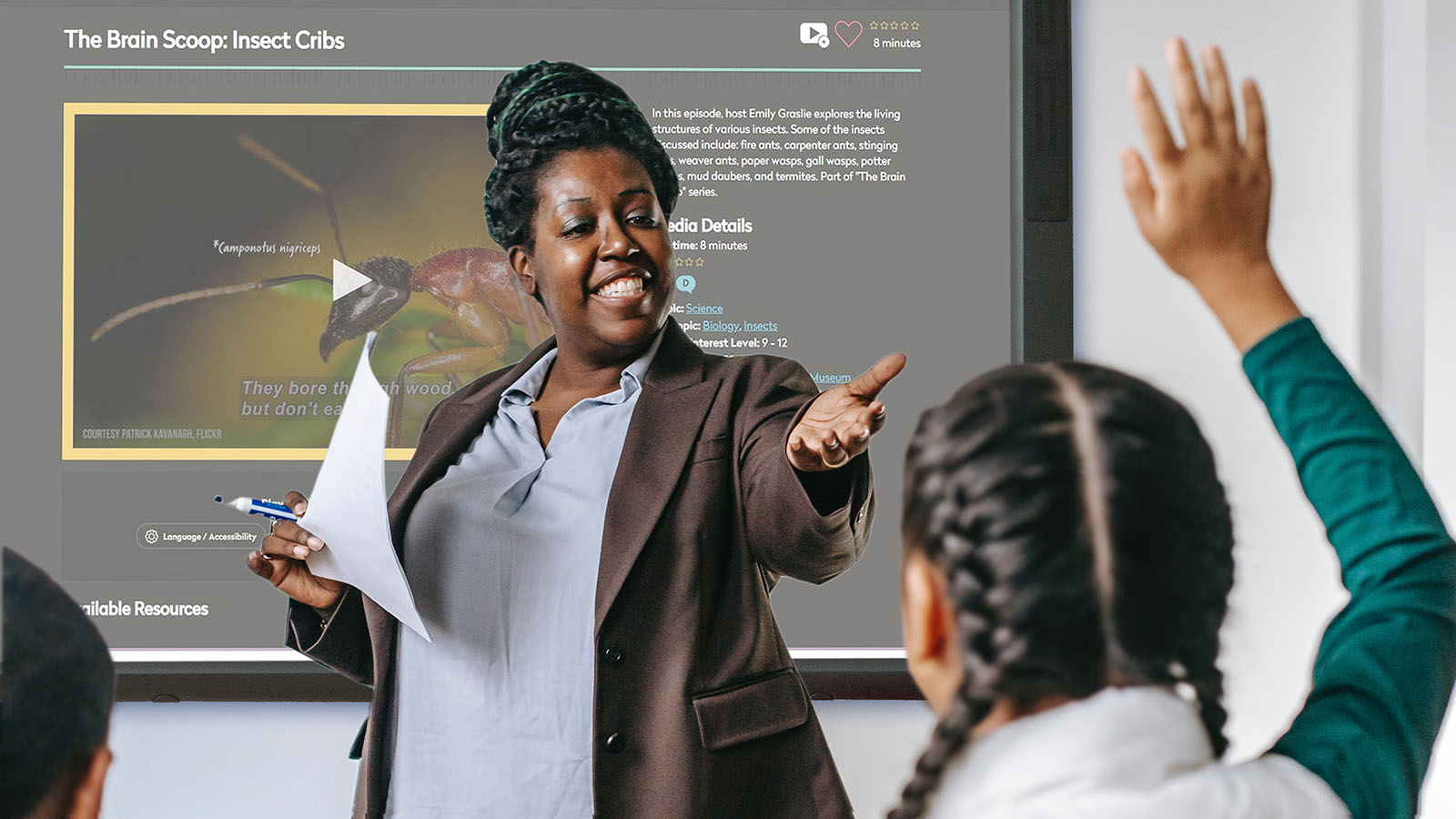
When the hearing students in class used iPads to work on phonics, Kaitlyn used DCMP to create a plan for increasing vocabulary and developing language skills using American Sign Language (ASL). Before long, her student’s mother would call, excitedly asking what he was trying to say, “because his language skills were developing so rapidly. He found several videos that he loved and continued watching them at home with his family, and this helped even more.” Kaitlyn continued her process and use of DCMP in the classroom (and at home) on a consistent basis for six or seven months. “My student was able to be included at the same level as his peers. His self-esteem soared!”
Kaitlyn learned about DCMP’s resources by enrolling in a QuickClass, one of many free professional development opportunities DCMP provides for teachers and interpreters. Along with professional resources, DCMP has hundreds of videos for learning ASL. DCMP has also added sign language interpretation to hundreds of educational videos for students whose primary language is ASL.
Taylor
“I am capable of interpreting this video but what an opportunity for the deaf student to feel like all of the other students and be able to just watch a video in their own language,” said Taylor, another educational interpreter. “The fact that this video has it in ASL is such an amazing resource. High school students are sometimes embarrassed by having an interpreter because they feel like they are singled out. If you can take every opportunity to provide access to them in their own language, it allows them to have more of that learning experience without putting a spotlight on them.”
Jamie
DCMP videos with added ASL interpretation help schools fill a needed resource gap. “Seeing this video was refreshing,” said Jamie, “because it allowed me as an interpreter to see different sign choices that the DCMP interpreter used.” Educational interpreters are not always afforded a team interpreter, making it difficult to share ASL knowledge, research educational topics in the moment, or have overall collaboration. “Not only is this material a great resource, but it also shows the deaf student variety in interpreter’s styles.”
“Having that feeling of being like everyone else can empower them at a young age to actively seek out resources in their own language."
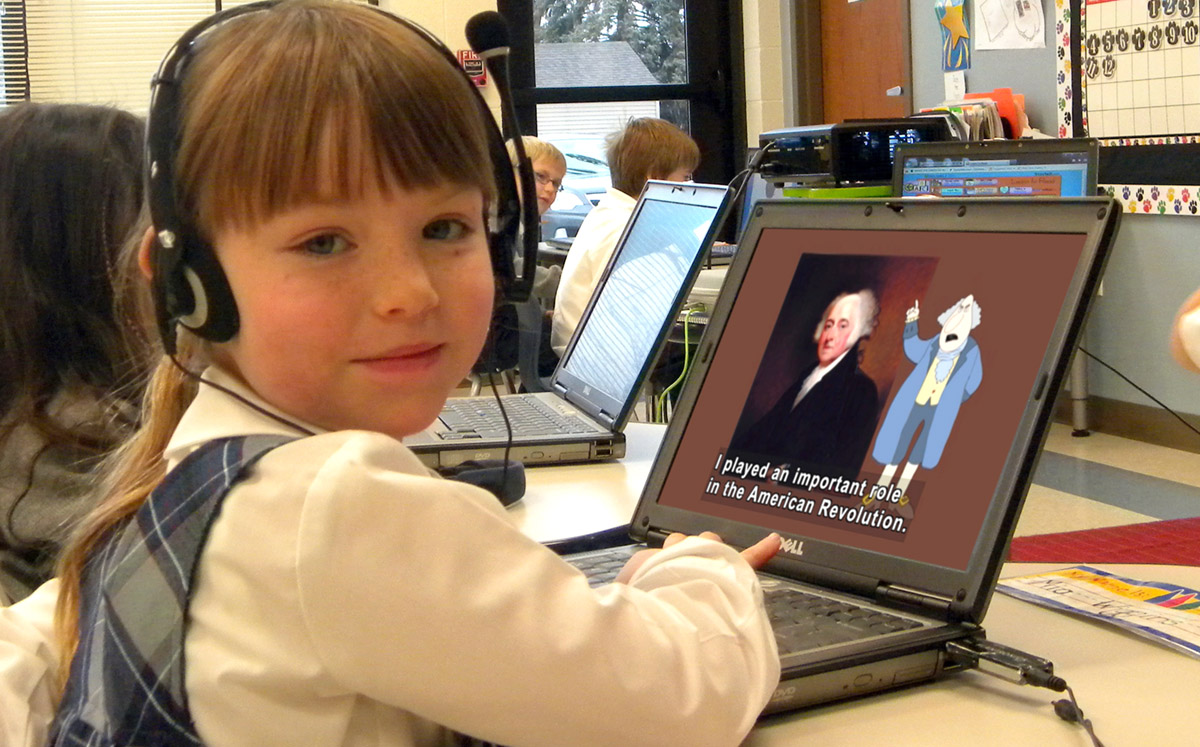
Videos with ASL also provided a unique resource for students whose native language is ASL yet have limited exposure to sign language. “Showing videos that have ASL interpreters already embedded in them allows the younger deaf students to see the topic they are learning about just as their hearing peers are seeing the information,” said Jamie. “Having that feeling of being like everyone else can empower them at a young age to actively seek out resources in their own language.”
eLearning Resources and Professional Development
Dezeray
The best resources in the world are only of use if people know about them and how to effectively use them. When teachers and parents learn about DCMP, they often describe it as a game-changer. “I am amazed at the layers of information provided by DCMP,” said Dezeray. “It is truly a one stop shop for students, teachers, and parents.”
Malia
DCMP provides free professional development classes, workshops, and modules online. “Since learning about DCMP and taking their online class Using Accessible Media in the Classroom,” said Malia, “I have become more aware of the quality and quantity of accessible descriptive media.” Carol added, “I also like the perk of the CEU component. I am always looking for classes that will improve my knowledge to ultimately help the students that I serve.”
“I am always looking for classes that will improve my knowledge to ultimately help the students that I serve.”

Through DCMP’s eLearning resources, teachers learn how to incorporate accessible media into their classrooms. “When creating a lesson plan,” said Malia, “I always scan DCMP's site for accessible videos. I have incorporated many of the DCMP accessible videos in the classroom setting.” Teachers also learn about DCMP’s high standards of quality for making media accessible. “I find the quality is excellent. The descriptions are very accurate and on time. But not all descriptions are. I have since scanned movies on other platforms, and the descriptive quality varies.”
Students notice the difference made by media that’s accessible too. “Most of my students have commented on how the description was easy to understand and was very detailed. It helped them understand more content, and most were more engaged.”
Zack
Zack agreed. “I think the most noticeable experience I've had with students having accessible media is a visible confidence and calm – especially for those who don't expect it to be accessible. They are able to read captions, listen to descriptions, or have videos signed. For others I have seen a physical change,” he said, “like a lean-in or a grin when finding out that a video is accessible.”
DCMP Content Partners and Systemic Change
Steve Rotfeld Productions
DCMP operates two grants from the U.S. Department of Education which provide funding for the creation of accessibility features for educational content. But it doesn’t stop there. DCMP partners with amazing content creators like Steve Rotfeld Productions, creating audio description for over a dozen different series in their Saturday morning E/I programming. These accessible programs reach 110,000,000 households, over 90% of the USA. And to make sure teachers and families can easily access these programs, they are available on-demand through DCMP’s streaming platforms.
Content with audio description is crucial for viewers who are blind, and its value has become well-recognized. Steve Rotfeld Productions requested, and DCMP created, an Audio Description Certification Statement, similar to the closed-captioning statements used in the industry to certify compliance with the captioning quality standards embodied in FCC rules. Steve Rotfeld Productions includes the certification statement in its marketing packages sent to FOX television stations.
Additionally, DCMP repackages the producer’s digital assets that they provide to television stations. This ensures that the audio-described versions of the content are received by all stations that broadcast the programs. DCMP acts not only as an accessibility provider, but also as an advocate, consultant, educator, and promoter.
“DCMP is a great organization and we are thrilled to be able to open our educational shows up to millions of people who would otherwise be unable to enjoy and learn from them,” said Steve Rotfeld, president of Steve Rotfeld Productions.
"Because of the success of our initial partnership, DCMP and Fred Rogers Productions intend to continue working together on future productions."
Fred Rogers Productions
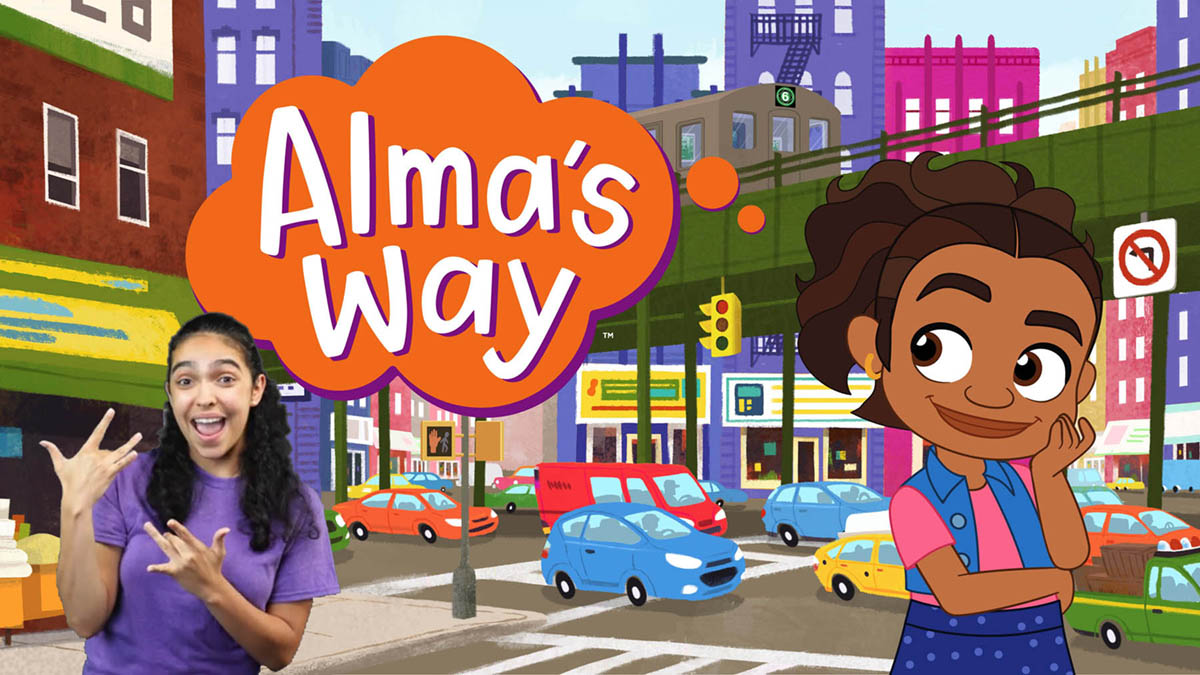
DCMP also partners with Fred Rogers Productions to add ASL to its content. Together, we take great care in selecting talented and appropriate sign language interpreters for series such as Alma’s Way, Donkey Hodie, and Daniel Tiger’s Neighborhood. Because of the success of our initial partnership, DCMP and Fred Rogers Productions intend to continue working together on future productions.
Episodes with ASL are available on the DCMP website through the ASL Pop-up Player, a secondary video player. DCMP also creates and shares composited versions of videos with interpreters overlaying the video, which are suitable for broadcast and streaming platforms.
About DCMP
The Described and Captioned Media Program (DCMP) partners with top educational content creators to help make video accessible and available to students with disabilities. Each year, 350 hours of accessibility are created for over 3,400 new titles.
DCMP is fully funded by the U.S. Department of Education, Office of Special Education Programs (OSEP) and produces audio description, captioning, and American Sign Language free of charge under this ED funding. DCMP provides this accessibility back to producers and distributors for their use across all platforms. In return, content owners grant DCMP a narrow streaming license to distribute content via our one-of-a-kind accessible streaming service for educational settings. Over 760,000 hours of accessible content are streamed every year.

DCMP’s Video on Demand service is free and available to families and educators who have at least one student with a disability inside the United States. An average of 14,000 new members are added each year.
DCMP provides continuing education and transition resources for educators, interpreters, families, and students with a focus on using accessible media in the classroom. DCMP processes over 1,400 CEUs annually. Additionally, DCMP provides public access to its popular Description Key and Captioning Key guidelines for creating high-quality accessibility features.
Developing new technologies in-house allows DCMP to respond quickly and regularly improve its media distribution platform and user experience. Automation of accessibility workflows have increased workflow and ease of use by content partners. DCMP develops utilization tools that help teachers effectively utilize and manage media with their students, such as Student Accounts and Classes, and Clips and Lessons creator.
DCMP collaborates directly with the YouTube Accessibility Team. We partnered with content creator Emily Graslie to co-produce the first educational video series on YouTube to feature audio description through a new pilot program and have worked with DCMP partners to backfill audio description files already created by DCMP to their YouTube channel content.
DCMP is a recipient of the American Council of the Blind’s 2022 Audio Description Award for “Gamechanger: Education,” a Gold winner of the 2024 Anthem Award for “Diversity, Equity & Inclusion – Digital & Innovative Experiences” and Silver for “Diversity, Equity & Inclusion – Education or Literacy Platform,” and was a nominee for a 2023 Webby Award in “Websites and Mobile Sites – Accessible Technology.”
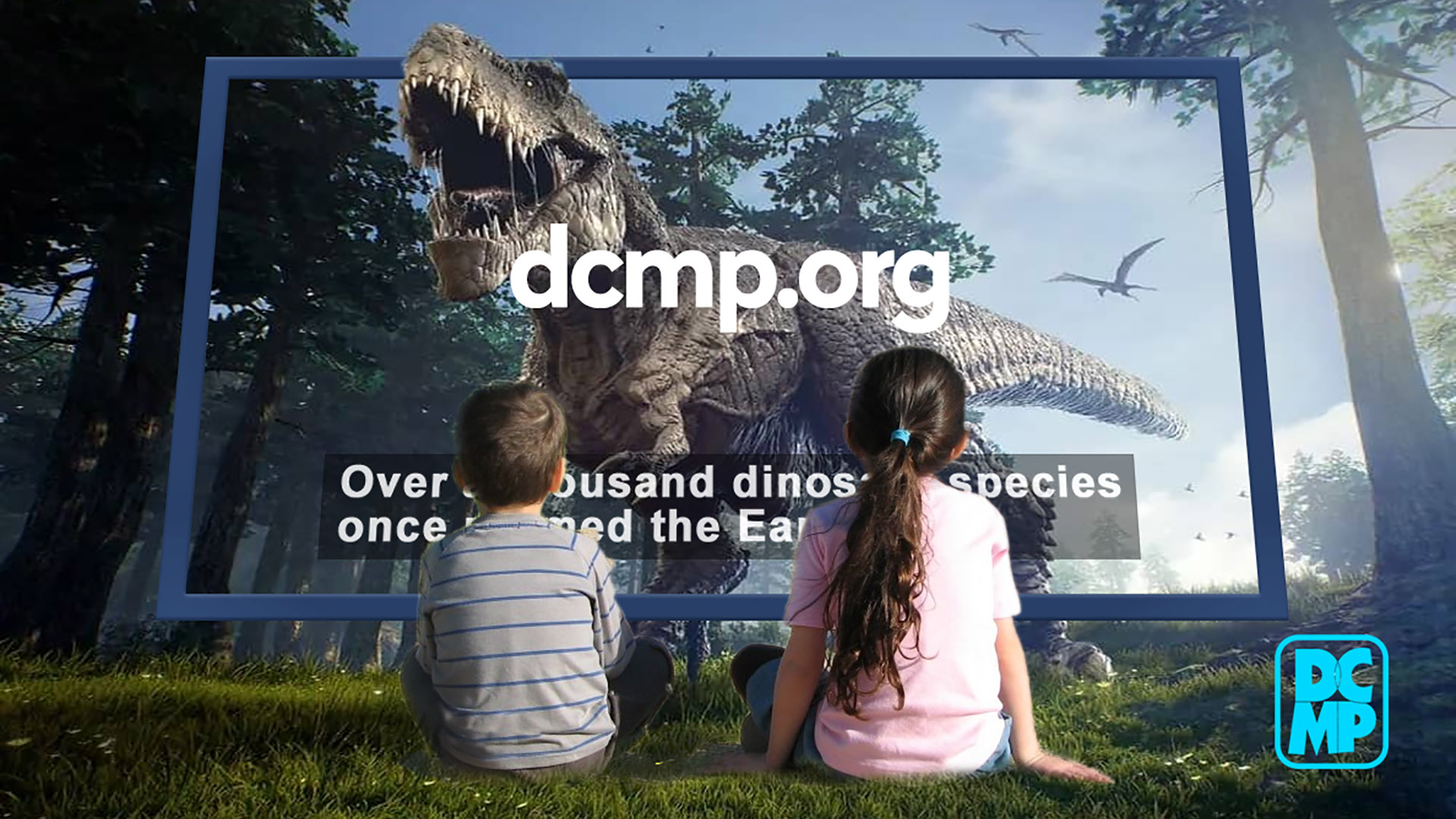
Tags:
Please take a moment to rate this Learning Center resource by answering three short questions.
